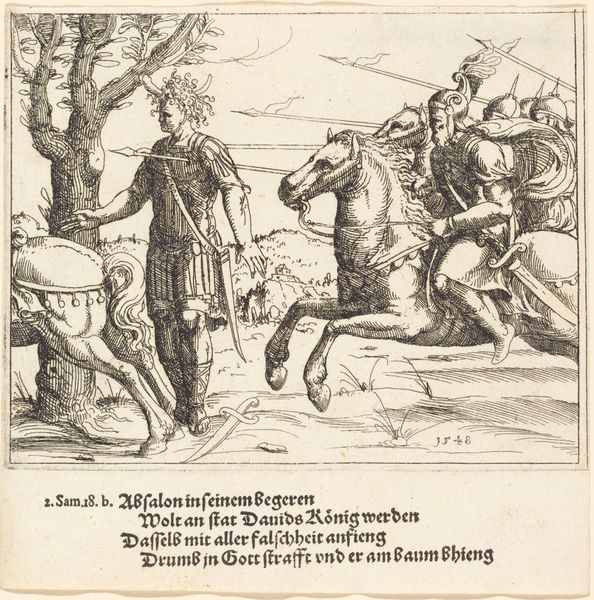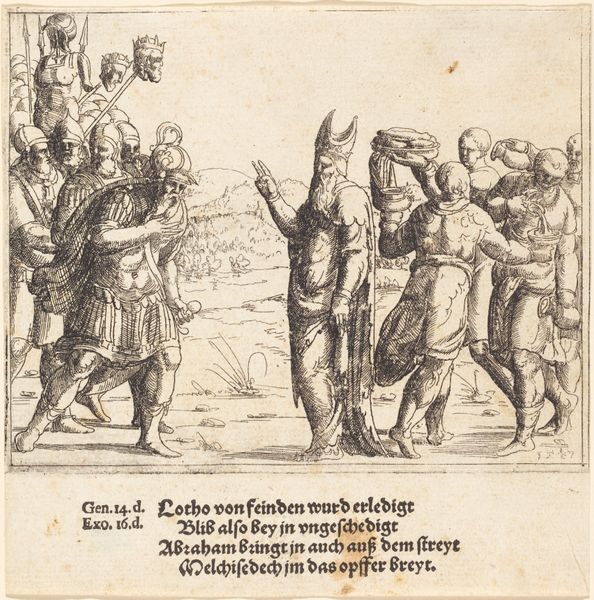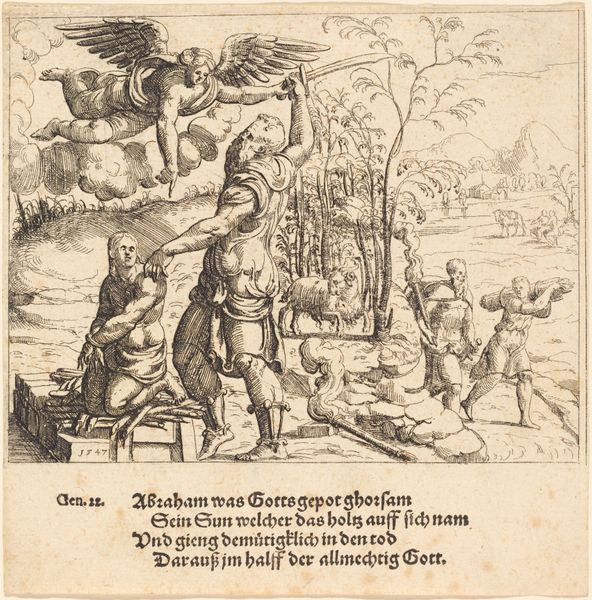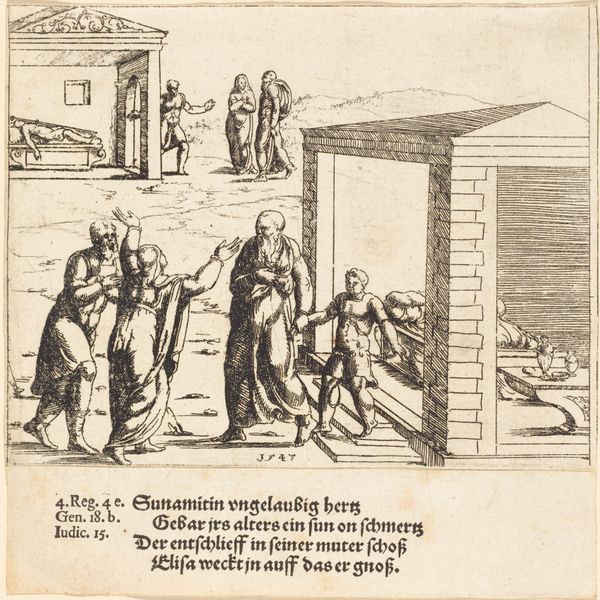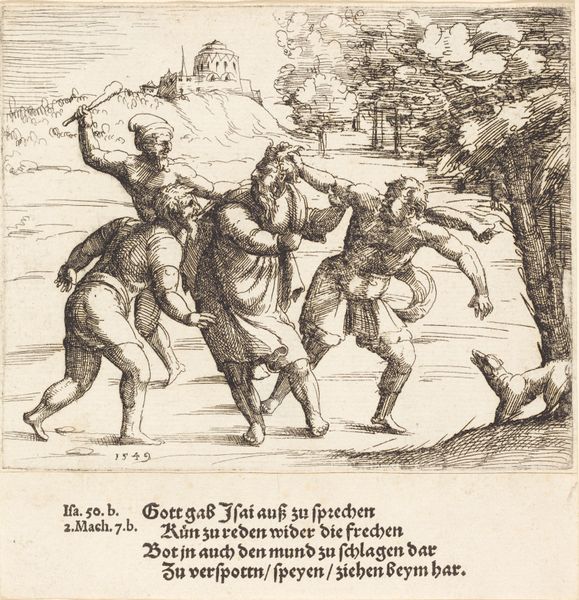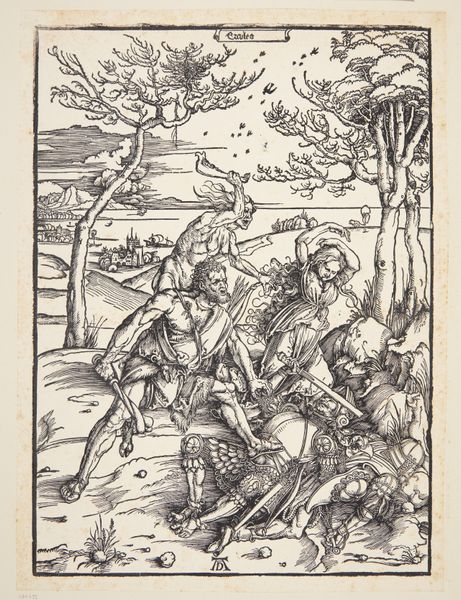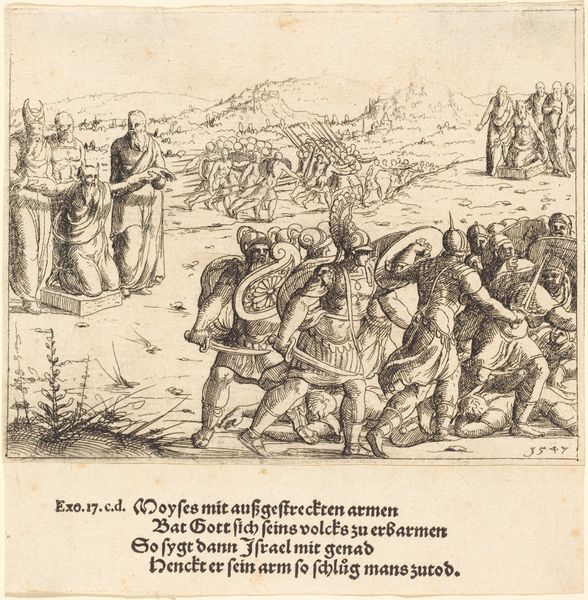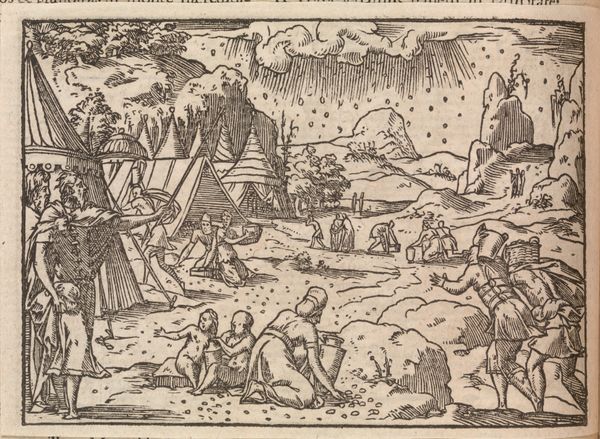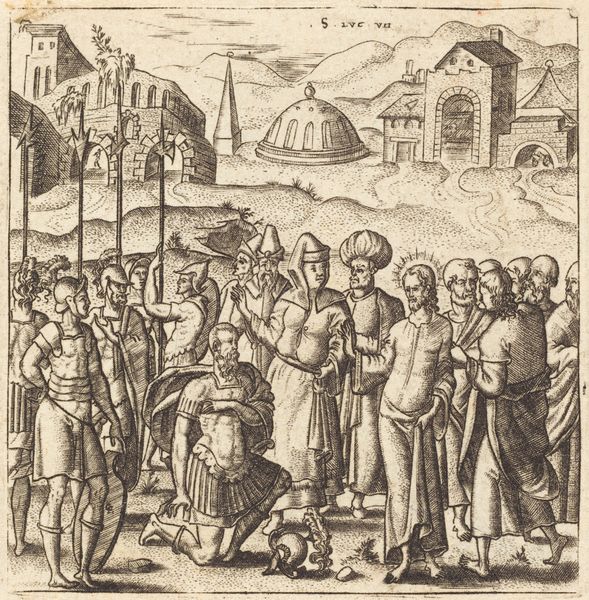
print, etching, engraving
# print
#
etching
#
history-painting
#
northern-renaissance
#
engraving
Copyright: National Gallery of Art: CC0 1.0
Editor: We're looking at "The Murder of the Children of Bethel" by Augustin Hirschvogel, created in 1547. It's an etching, and the scene is intensely violent; it almost feels unreal, with the crisp lines detailing this biblical story. What's your interpretation? Curator: This piece reflects the Northern Renaissance's fascination with biblical narratives and their role in shaping social morality. Hirschvogel uses the story of Elisha cursing the children to explore themes of divine justice and the consequences of disrespect towards authority. Think about the social unrest of the time - religious reformations were shaking the very foundations of European society. Do you see how this image might reflect those anxieties? Editor: I guess I do. So, it's not just a straightforward depiction of a Bible story, but also about maintaining order? The figures, though small, feel monumental in their suffering, like a warning. Curator: Precisely. And consider where something like this would be seen – not in a grand cathedral, but likely in more accessible printed form. This makes it part of a broader effort to disseminate moral and religious lessons to a wider public. The starkness of the print medium itself reinforces the severity of the message. Editor: That’s fascinating, I hadn't thought about the medium adding to the overall feeling. So, it's not just the artist's intent, but also how and where the art was consumed? Curator: Absolutely. The context of reception is just as important as the context of production when we consider the politics of imagery. What do you take away from this after considering its potential social implications? Editor: That history painting, especially when printed, wasn’t just about showing the past, but about shaping present behavior and beliefs. The distribution method becomes the message itself. Thanks. Curator: Precisely! It shows how the history we find depicted in art is intrinsically related to its social and political life.
Comments
No comments
Be the first to comment and join the conversation on the ultimate creative platform.

